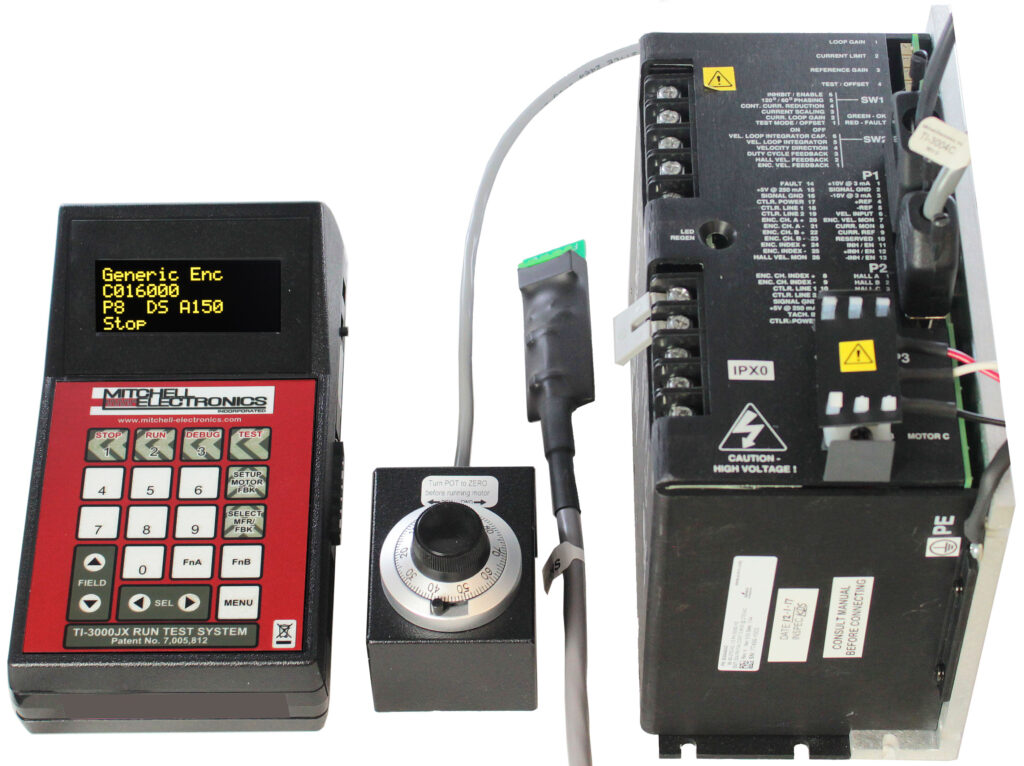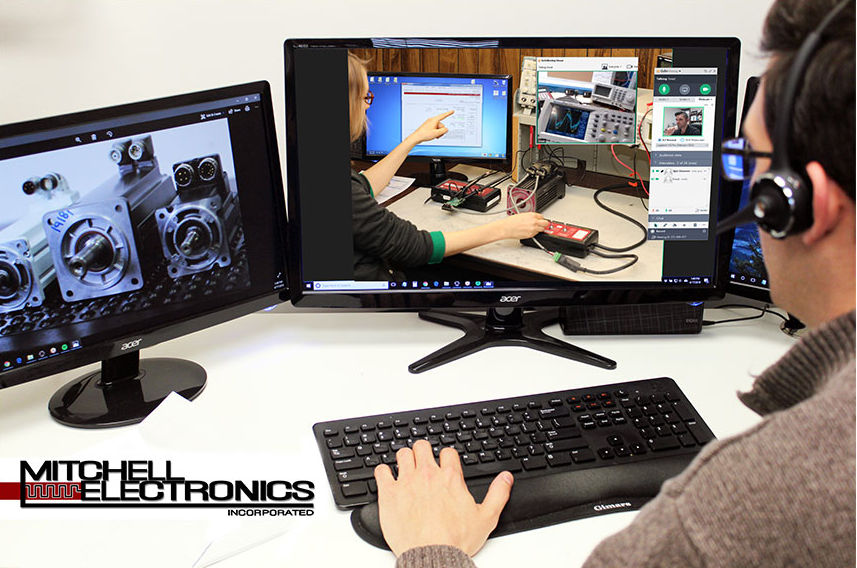Common Problems When Attempting Servo Motor Repairs Without the Proper Tools
Like any piece of equipment, servo motors are prone to wear and will experience issues over time. When problems arise, accurate diagnostics and swift repairs are essential. However, attempting these tasks without the proper tools creates significant challenges before, during, and after the repair process.
General-purpose tools often fall short, as they cannot accurately replicate real-world conditions or effectively test critical components such as resolvers and encoders, which are feedback devices used on servo motors. These limitations result in misdiagnosis, leaving issues unresolved, consuming valuable time, and driving up repair costs.
Here are some common issues that can arise when attempting servo motor repairs without using the proper tools.
Inaccurate Diagnostics
Many repair technicians are quick to employ generic diagnostic devices such as oscilloscopes or multimeters to identify servo motor issues. While these instruments have their place in general electronics testing, they are not designed to diagnose the intricacies of servo motor systems.
Such devices fail to identify specific servo motor issues such as encoder feedback functionality, feedback alignment, commutation, and motor winding problems. Using insufficient diagnosis methods increases the likelihood of unresolved fixes, further damage to the servo motor, and prolonged equipment downtime.

Encoder Alignment Issues
Encoders play a critical role in servo motor systems, but they are also delicate components. Testing encoders without the proper tools makes it challenging to verify alignment or identify subtle issues like signal degradation or noise interference. When these faults go undetected, they can lead to inconsistent performance, reduced accuracy, or even system failure.
The encoder alignment angle represents the precise relationship between the encoder and the motor windings, a crucial factor for system performance. Proper alignment ensures the motor will deliver the required torque and velocity as instructed by the controller. Even minor misalignments can cause significant issues, including poor motor performance or complete failure to operate. Symptoms of incorrect alignment can include overheating and overcurrent which can lead the technician on a false search for problems with the motor windings or magnets, which often exhibit similar symptoms.
Extended Downtime
Lacking precision diagnostic tools, companies often find themselves in a cycle of discovery, repair, and rework. In such cases it’s common for technicians to incorrectly identify the source of a problem. This leads to unnecessary part replacements or incomplete fixes. This trial-and-error approach inflates repair costs, but more importantly, it extends downtime.
Additionally, a faulty motor may be sent out for repair without first performing a diagnostic. This often stems from a lack of suitable diagnostic tools. Sometimes fixes can be made quickly in-house. In such instances, outsourcing repairs without understanding the nature of the problem can lead to unnecessary expenses and delays.
Validating Repairs
In some cases, motors are returned to service without fully addressing the root cause of the problem. When servo motor repairs are not properly validated, minor issues can escalate into major expenses, leading to decreased performance, reduced efficiency, and premature failure. Poor validation methods caused by unresolved motor issues compromise operational efficiency. This can quickly spiral into excessive downtime, disrupted operations, delayed orders, and forfeited contracts.
Invest in Your Success with the Right Tools
Repairing servo motors without specialized tools introduces numerous risks, including inaccurate diagnostics, inefficient repairs, and prolonged downtime. These challenges create a drain on production and ultimately profitability.
Conversely, investing in reliable testing and validation tools ensures that servo motors perform at their best, and operations run smoothly protecting both your equipment and bottom line.
Mitchell Electronics Inc. offers advanced servo motor diagnosis and repair solutions that deliver precision, reliability, and user-friendly operation. With our tools, companies achieve successful repairs, minimize costs, and enhance operational efficiency.
If you’re committed to maintaining a healthy manufacturing environment, the choice is clear: investing in Mitchell’s products isn’t just smart, it’s essential in preserving the performance and longevity of your servo motor-driven equipment.
Take a Deeper Dive Into Servo Motor Repair
For additional information on servo motor troubleshooting and maintenance, download The Quick Reference Guide to Servo Motor Maintenance and Repair. Inside this in-depth guide, you’ll find insights into:
- Diagnosing common servo issues
- Understanding common servo error codes
- Knowing what you can fix in-house and what needs to be sent out for repair
- Identifying tools you’ll need to make repairs in-house
- Learning what makes a successful repair shop
Questions? Contact us here to learn more about our complete line of servo motor repair products, services, and training options!
Servo Motor Training
Mitchell Electronics, Inc. offers servo motor training that’s included with your software license. Our training sessions are collaborative, personalized, and designed to help you and your team learn the skills you’ll need to practice proper maintenance and repair.
Our training is offered 100% virtually. No travel costs or waiting periods… just expert training organized into short, focuses sessions on a single topic, whether that’s servo maintenance, encoder alignment, software training, or other needs your team may have.
And, training is offered English, Spanish, Portuguese, German, or French!


